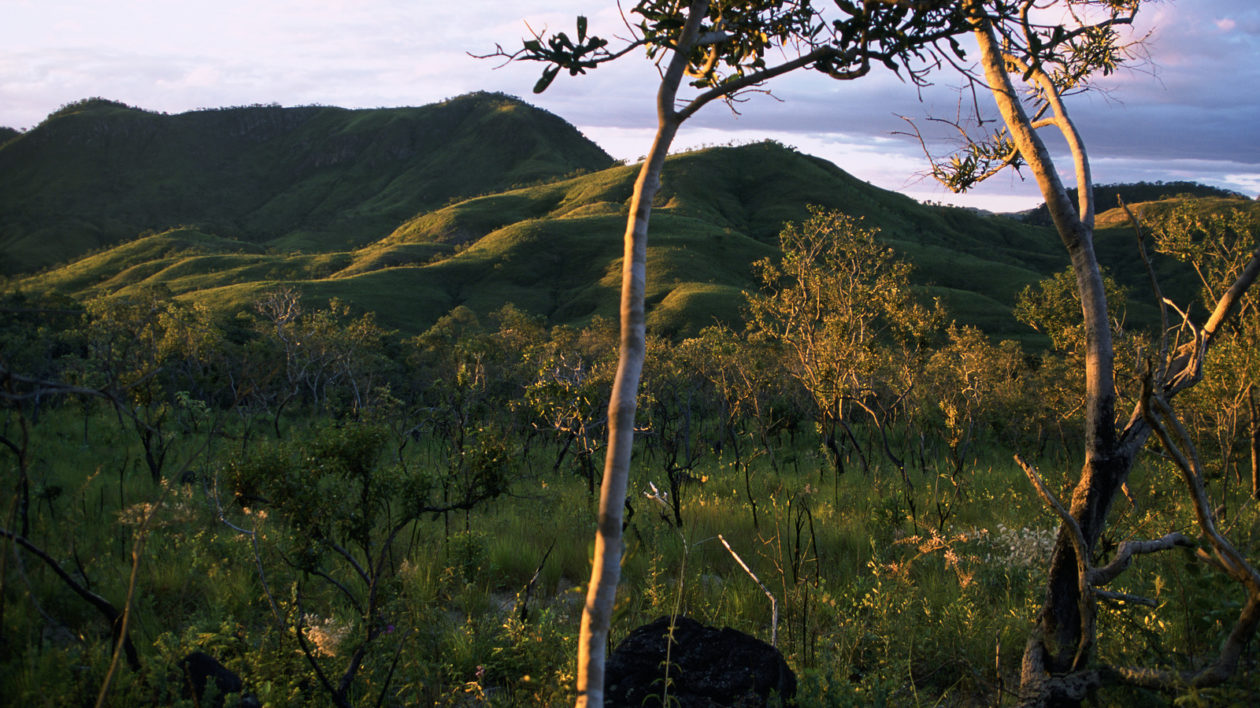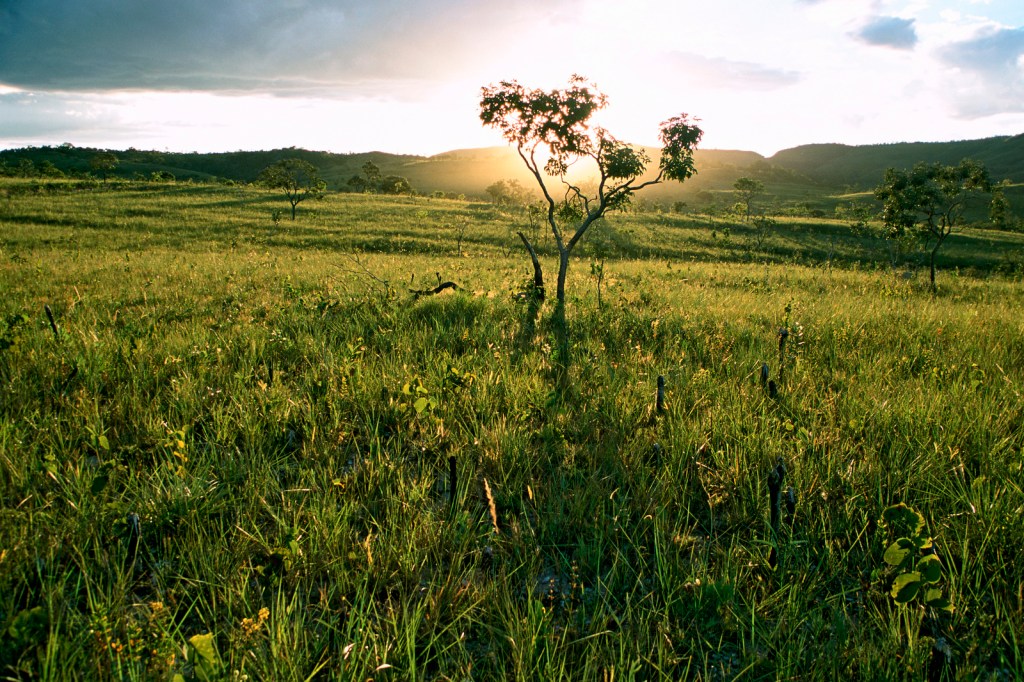What if simply changing the scale of mitigation planning could drastically improve benefits to nature?
New research from Nature Conservancy and Dow scientists shows that landscape-scale impact mitigation in Brazil’s Cerrado offers significant benefits for conservation, without adding substantial cost increases for local commercial agricultural producers.
The Savannah of South America
The Brazilian Cerrado is South America’s equivalent to the African Serengeti. A network of rivers and palm wetlands punctuate wide, rolling grasslands, which are home to species like tapirs, Pampas deer, and maned wolves.
“The Cerrado is considered a global biodiversity hotspot, but it has lost more than half of its natural vegetation,” says Christina Kennedy, a senior scientist at the Conservancy.
Sugarcane and soybean cultivation has claimed much of the Cerrado, and both are predicted to expand in the coming decades. Furthermore, 97 percent of the Cerrado is located on private lands, requiring conservationists to work with a patchwork of landowners to protect this ecosystem as agriculture grows.
“We need to know how we can move forward in a way that meets production and livelihood goals on these properties, while also protecting biodiversity and ecosystem services, like water quality,” says Leandro Baumgarten, science manager at the Conservancy’s Brazil Program.
The key to meeting both agriculture and conservation goals simultaneously lies with the Brazilian Forest Code. The country’s main mechanism for conservation in agricultural landscapes, the code requires that farmers maintain a certain percentage of natural vegetation — 20 percent for the Cerrado — to offset agricultural development. It also requires that landowners protect local water supplies by conserving water and preventing soil erosion through natural buffers around riparian areas, steep slopes, and hilltops.
But the Forest Code has an Achilles’ heel — farmers can designate any part of their land for protection, regardless of its conservation value or placement in relation to other reserves. “As a result, you can end up with highly fragmented patches that meet the requirement, but may not be effective for biodiversity conservation,” says Kennedy. What’s more, Forest Code compliance is low and enforcement is weak.
Kennedy and her colleagues set out to see if planning Forest Code compliance on a landscape scale, instead of farm-by-farm, would generate greater benefits for both producers and conservation. “Economic activities and local ecosystems are both governed by broad-scale processes,” says Kennedy, “so our theory was that we can be more successful at both if we move from a farm to a landscape scale.”

Optimizing Business for Conservation
Kennedy, co-lead author Daniela Miteva, and their colleagues modeled sugarcane expansion scenarios in one Cerrado watershed, comparing the status quo farm-level Forest Code compliance to landscape-level compliance scenarios that focused on either habitat restoration or protection.
Previous research on the benefits of landscape-scale planning has largely focused on conservation alone or in conjunction with agriculture. “In our approach, we didn’t even consider conservation objectives,” says Kennedy. “We wanted to see if we could still benefit conservation by planning from only a business perspective, but at a larger scale.”
They also examined how the change in scale affected the cost of Forest Code compliance, because a common concern is that compliance is cost-prohibitive.
Their results, recently published in Science Advances, show that compliance for the Forest Code for a large agricultural producer doesn’t impose a large cost burden, but generates substantial conservation benefits over the long term. Forest Code compliance was predicted to support more than 75 percent of all species in the watershed, store up to 2 million additional tons of carbon, and improve surface water quality, when only setting aside 15 to 22 percent of the watershed in natural vegetation.
“Landscape-scale mitigation across a whole region is more cost effective from a business perspective and provides significantly better results for conservation,” says Elizabeth Uhlhorn, a sustainability manager for nature at Dow and co-author on the research. “It’s not often that the least-cost method of compliance also happens to provide the most positive impact.”
The models predicted that landscape-level compliance could support an additional 29 to 74 species and generate additional storage of 151,000 tons of carbon, while reducing business costs by $19 to 35 million USD per six-year production cycle.
They also found that outcomes were significantly affected by how a landowner complies with the Forest Code — either by restoring degraded lands or by protecting existing habitat remnants. Kennedy says that the study watershed contains less than 20 percent native habitat, and what remains is largely on inaccessible steep slopes and hilltops that are also unproductive for agriculture.
“If a company wants to minimize costs it makes sense to protect these areas,” she says, “but this land is least productive, not necessarily the best place for conservation, and not under threat for development.” Their models predict that the best benefit for conservation is through restoring degraded lands to create more native habitat, which can happen with little additional cost to developers.

This research is part of a larger collaboration between the Conservancy and The Dow Chemical Company to advance science that helps businesses identify and quantify the value of nature conservation to business strategies.
The next step for the Conservancy-Dow Collaboration and the Brazil program is to figure out how to make these findings applicable on the ground. The Brazil program is working with municipalities to further promote a registry system of Forest Code reserve lands, so that landowners can better coordinate on where natural vegetation allotments are set aside. They’re also experimenting with incentive programs to encourage famers to comply with a landscape-scale plan.
“It’s easy to create the plans on paper, but how do you create effective mechanisms that would both allow and incentivize producers to follow our recommendations?” says Kennedy.




Join the Discussion